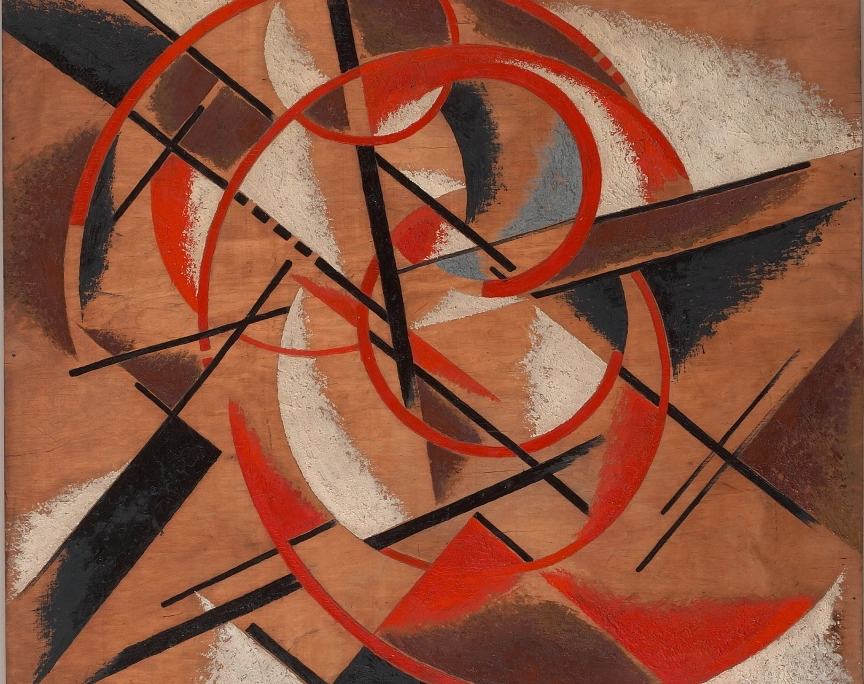Space Force Construction
Lubov Popova
1921, Oil and wood sand on plywood
112,5 x 112,3 cm.
Liubov Popova created a series of non-figurative works which she named “Painterly Architectonics” during the period 1916-18 and Painterly Constructions and Spatial- force constructions during the period 1920-21. Popova was interested in architecture and studied the traditional Russian architecture and also the Islamic architecture of Samarkand where she traveled in 1916 and was impressed by its combination of colors and geometric forms. Her close friend and colleague, the architect Alexander Vesnin, influenced Popova’s interest in architectural forms.
In 1916-18 Popova was focused on non-objective painting after Malevich's suprematism, although she was not limited – with some exceptions concerning some of her first "painterly architectures" - to the suprematist formula of space-borne geometrical forms floating on an off-white void. For Popova, the concept of Architectonics transcends the strict limits of architecture and is related to the dynamic combination of geometrical form, volume, color and material. Architectonics do not intend to have a structural, functional logic but through the power of color and shade they strongly convey a sense of plasticity and offer to architecture original proposals of harmonious geometry. Moreover, the concept of "plasticity" had occupied Popova since her cubofuturistic period, when she described her paintings as “plastic”. The Space-Force Constructions, through a combination of circular and linear forms create a sense of constant motion and seem to transform the painting into an object with kinetic energy.

